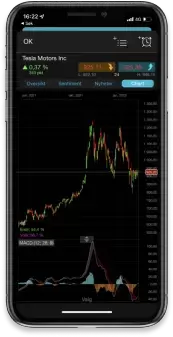European markets managed to procure a second successive day of gains yesterday, despite a slide in Asia markets, after Chinese inflation slipped further towards deflation.
The FTSE100 also managed to eke out a daily gain for the first time this month bringing an end to a sequence of 5 successive daily losses.
US markets also underwent a cautious start to the week with attention focussed on this week’s inflation numbers, which are due tomorrow and could go some way to indicating whether we see any more rate hikes beyond this month.
While last week’s losses were largely predicated on concerns that central banks were gearing up for multiple rate rises in the coming months, the data out of China appears to suggest that the bigger danger in the coming months might be deflation.
Today’s final Germany inflation numbers are expected to confirm that June CPI rose to 6.8% from 6.3% in May, although most of that rise appears to have been attributed to one-off factors that won’t be repeated in the coming months, after temporary reductions in rail fares were reversed.
The pound had a slightly softer tone yesterday after a private sector survey showed that wage growth is starting to slow along with the pace of hiring in June. There has been little evidence of this trend in any other recent data, although with the latest ONS numbers due today there is more of a lag.
Just over a month ago the April UK wages numbers reinforced the challenge facing the Bank of England, after wage growth surged to 7.2%, and a record high outside of the pandemic, prompting a surge in UK 2-year gilt yields which took them above their October peaks of last year in the wake of the ill-fated Kwarteng budget.
The surge in the last few months wages has served to highlight the abject policy failure of the Bank of England to act early enough, as workers already being squeezed on all sides agitate for bigger pay rises in order to close the real wages gap. Today’s May wages data is unlikely to see much evidence of a weakening in these upward pressures with expectations of 7.1% for the 3-months to May.
Short term yields have continued to rise in anticipation of further rate rises in the coming months, although we have seen a pullback in the last couple of days, from 15-year highs in UK 2-year yields. If today’s wage numbers continue to look sticky, the central bank may find it has no good options when it comes to getting prices under control.
The number of people in employment also rose to a record 76% as high food inflation forced people back into work, forcing the unemployment rate down to 3.8%, where it looks set to stay this month.
It’s also important to note that the wages numbers are average numbers which means in a lot of cases, pay rises are much higher in certain areas of the economy, trending at between 10% to 20%. This trend may slow in the coming months; however, it is unlikely to slow rapidly even as headline inflation starts to come down rapidly after July.
Later on, this morning, the July German ZEW survey is expected to show a further deterioration in expectations sentiment to -10.6 down from -8.5, with the current situation expected to fall to -62, from -56.5.
EUR/USD – We need to see a move above the June highs at 1.1010/15 to target a move towards 1.1100, and the highs this year. A break below the lows last week at 1.0830, opens the way for a potential move towards 1.0780.
GBP/USD – fell back to 1.2750 yesterday, before making new 14-month highs nudging above the June highs, as we continue to look for a move towards the 1.3000 area. Main support at 1.2680 area.
EUR/GBP – tested up to the 0.8570/80 area yesterday before slipping back. Still have support at the 0.8515/20 area and June lows. We also have resistance at the 50-day SMA which is now at 0.8630. Below 0.8500 targets 0.8460.
USD/JPY – continues to look soft falling below 142.00 with the risk of further losses towards the 139.80 area. Last weeks’ weekly reversal suggests that a short-term top might be in. We need to see a move back above 142.80 to stabilise and argue for a return to 144.00.
Disclaimer: CMC Markets is an execution-only service provider. The material (whether or not it states any opinions) is for general information purposes only, and does not take into account your personal circumstances or objectives. Nothing in this material is (or should be considered to be) financial, investment or other advice on which reliance should be placed. No opinion given in the material constitutes a recommendation by CMC Markets or the author that any particular investment, security, transaction or investment strategy is suitable for any specific person. The material has not been prepared in accordance with legal requirements designed to promote the independence of investment research. Although we are not specifically prevented from dealing before providing this material, we do not seek to take advantage of the material prior to its dissemination.







